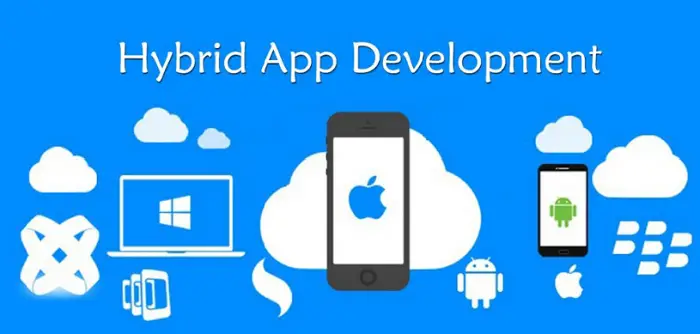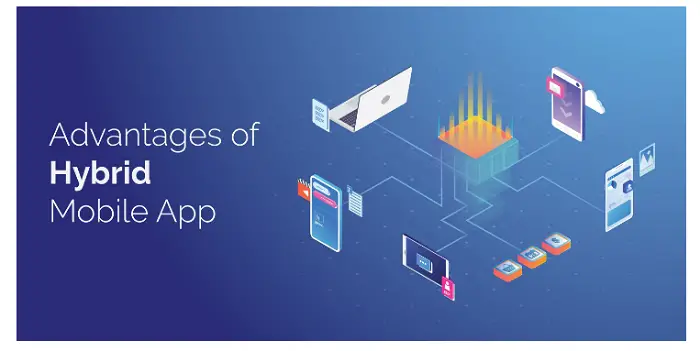Hybrid app development is the amalgamation of a single app incorporating additional native features. As the name suggests, a hybrid app blends web and native mobile applications. When creating a mobile application, you must choose the right hybrid solution since many options are available. The easiest way to do it is with the help of some good application development services. You must also figure out your budget, target audience, team’s experience with the technology, and timeline when picking out the right solution for your application.
For Hybrid App Development, keep in mind Expertise, Level of involvement, and Cost.
The core of the application of a hybrid app is written using web technologies such as JavaScript, CSS, and HTML. These technologies are then enclosed within a native application, reaping several PWA benefits. The applications can access the mobile’s features by using plugins. The app is run within a native application making it invisible for naive users to know that they are using an app. Instead, the app is camouflaged within the user’s browser. A solution like Apache Cordova uses embed codes into a native application wrapper.
See also: App Development Budget And Budget Planning | Full Guide
Table of Contents
Benefits of Hybrid App Development
Hybrid app developments have a variety of significance, marking it better than the native application.
Some of these include:
The Hybrid app development cost is low.
Hybrid apps usually cost less than native apps because developers write one code set, lowering maintenance and initial costs.
Also see: App Development Budget And Budget Planning | Full Guide
Build time is faster.
Hybrid apps have one database to manage and therefore take less time to build compared to native apps.
Available offline.
Hybrid apps can work offline since they have a native infrastructure. They also allow users to see previously loaded data and still load the application even when they can’t access real-time data.
Easily scaled on another platform.
Various devices can quickly deploy Hybrid apps since they use a single codebase. A good example is you can build them for Android and quickly launch them on iOS.
How to choose a hybrid app development company for your business.
Many developers are in the market, so finding the right choice for your business may be challenging. You need to find a reputable company like BinarApps to create your preferred hybrid app for your specifications. Some of the factors that need to be taken into consideration while choosing a hybrid mobile app development company include:
Cost
Different hybrid app developers charge different prices, so you need to set a budget. You need to figure out how much you can spend. Take the time to get various price estimates from potential candidates before settling on a developer.
It is best to decide between saving money and spending a higher upfront cost to bring you a higher ROI in the long run.
Level of involvement
A hybrid app development company builds an app for you, so you must be involved.
Some companies will restrict your involvement, so knowing this information is vital.
Expertise
It is essential for the company you choose to have technical experience and necessary certifications. They must also know about hybrid mobile app development to fulfill the tasks of building an app. If you hire experts, you will be sure you are getting the best service.
FAQS
Can hybrid apps access device-specific features?
Yes, hybrid apps can access device-specific features using plugins or APIs provided by hybrid frameworks. These plugins bridge the gap between web technologies and native components, allowing developers to access device functionalities like cameras, GPS, contacts, and push notifications.
Which hybrid frameworks are commonly used for app development?
Some popular hybrid frameworks for app development are React Native, Flutter, Ionic, and Xamarin. React Native is widely used and backed by Facebook, while Flutter is gaining popularity due to its high-performance UI capabilities.
Can hybrid apps be published in app stores?
Yes, hybrid apps can be published on app stores like the Apple App Store and Google Play Store. App stores generally accept hybrid apps if they meet the respective platform guidelines and policies. However, it is essential to ensure that the app's performance, user experience, and compatibility are thoroughly tested before submission to ensure a smooth review process.
Can existing web applications be converted into hybrid apps?
Existing web applications can be converted into hybrid apps using frameworks like Cordova or Capacitor. These frameworks allow developers to wrap web content into a native container, providing access to device features.
Are hybrid apps cost-effective compared to native apps?
Hybrid apps can be more cost-effective than native apps, as they require a single codebase that can be used across multiple platforms. This eliminates the need for separate development teams and reduces overall development and maintenance costs.
Can hybrid apps work offline?
Yes, hybrid apps can work offline using local storage capabilities and caching mechanisms. They can store data locally on the device, allowing users to access certain app features and content without an internet connection.
Conclusion
Everything may seem terrifying when you are a newbie, but everything starts making sense slowly. It will take time to learn this. With this beginner’s guide, you will grasp the basic knowledge required for Hybrid app development, and it is an excellent way to kickstart your journey.





Hey
First off, congratulations on this post.
We appreciate your sharing this informative article. Your information is beneficial and essential for everyone.
Your articles have given great insights on freelancing. Beginner’s Guide to Hybrid App Development, we want to encourage more freelancers and clients to come on board and experience the change in the freelance industry. Thank you for sharing your thoughts with us.